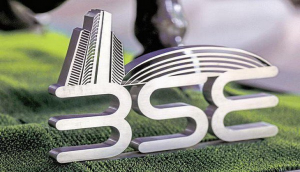
Technology or software is the backbone of GST, the success or failure of which is heavily dependent on technology. GST will create a paradigm shift in how Small Business “run their day to day business”, and the. Changes in the Accounting entries that one has to follow to comply with GST Law.
How digital India plays its role in GST?
Communication with the department is in electronic form such as communication over emails with regards to Registration till Assessments & Audit. Even the notices are served in Electronic form and the responses are made in quick time from assessee in Electronic form. The returns and registration Form are signed with Electronic Signatures ( DSCs / e-sign). Overall, the mechanism of filing returns has completely changed in GST regime.
Accounting (+) Software in GST:
Some of the Accounting Applications used by- SME: Desktop-based Application Online Platforms such as Tally. ERP 9, Profit, Marg, easy, whereas few are cloud-based application platform such as Quick book, numbers, Xero, Wave, Zoho and many more accounting software.
In this article, I have tried to list out the challenges which every SMB s and Other large-sized enterprises could possibly undergo or the feel of changes in day to day running of businesses which every SMB s and other large sized enterprises would experience while in transit to GST and have left the judgment for you to decide the role of accounting software for your businesses in GST era.
In the earlier system, we were not required to file each and every sale transactions online but post GST every transaction has to be reported and filed in form of GST returns only through an online platform. For Input Tax Credit, the taxpayers were used to take credit on basis of the invoice in earlier taxation laws but post-GST, the taxpayer would only be eligible for the credit when the vendor pays the taxes and filed his monthly return. The only single return was filed by taxpayers in the earlier system but under GST, minimum of (3) returns are to filed by the taxpayers. In previous taxation laws, we had so many forms of Indirect Tax laws requiring a hell of compliances for each separate law but post GST, mostly all forms of Indirect Tax laws have been subsumed into GST requiring lesser compliances. Any error at the time of filing the return of erstwhile taxation laws was allowed to rectified by filing a revised return but in GST we don’t have any such provisions till date.
From accounting angle, the masters creation under erstwhile system and GST is going to be totally different :
|
Previous Tax laws |
GST |
|
Tax Structure : We had Central excise, Central Sales Tax, Value Added Tax, Service Tax, Cess etc., requiring to create ledgers for each types of taxes separately. |
Tax Structure : Here in GST we have, CGST, IGST, SGST and UGST it's just enough to create ledgers for these individual types of tax levies as every other forms of taxes have now been consolidated into one – “GST” |
|
Inventory Management : In erstwhile taxation laws integration of accounts and inventory didn’t mattered a lot. |
Inventory Management : But in GST it matters a lot because law demands that inventory to be integrated into accounts on basis of HSN Codes. And this would require a proper GST accounting software system in place integrated with accounts. |
|
Taxation : ▪ Invoicing rates mostly at gross levels at end of invoice. ▪ Point of Incidence – Tax calculation Logic for Central Excise /VAT/Service Tax |
Taxation : ▪ Destination based Taxation (CGST+SGST / IGST) ▪ Line item level Rates with HSN/SAC |
Changes in Transaction - Sales : There’s a huge change in reporting of sales transactions in GST. All your customer based transactions are reported into following : (a) Business to Business (Registered dealer sales) and Business to Customers (Registered dealer sales) are categorized under one category and the same is classified in the GST Returns as well. And all you Business to Consumer (large scale invoices, Value exceeding 2.5 lacs) and Business to Consumer (invoice not exceeding Rupees Two lakh fifty thousand) are categorized under category B2C as consumer is the end user and he will not be holding GSTIN number to claim ITC, such sales are classified as B2C. All this if classified properly into the GST accounting software would help us while matching the details with the returns or while filing the details into the GST Returns.
As GST is a levy which is destination based, the tax Classifications becomes important as well. If the sale is inter state then IGST should come into picture and of its intra-state then CGST and SGST should be levied. Your GST accounting software should be smart enough to suggest which tax Classifications would form Part of the invoice raised by you. In Tally. ERP 9 it is very simple and clear. For sales within the state (intra-state) the sales ledger is created and in tax classification column we have to select Intra State sale taxable and the classification is complete with this. And even if by mistake if you give the tax Classifications as IGST while preparing invoices for intra-state sale the system doesn’t calculate the tax rate for you because the tax classification is wrong. One can simply guess from the above as how much importance the GST accounting software holds in GST.
Even for Sale transactions to one’s own branches in other states, separate GSTIN is required which was not required under erstwhile taxation laws. As under old law, this was considered as Stock Transfer having no tax impact. But in GST, Stock Transfer is treated as B2B Sales. HSN code and SAC codes have become must under GST as a government is trying to curb the tax evasions which were happening at alarming levels in pre-GST era. As a result accounting software becomes much more than a choice and it falls under necessity as an Accounting software integrated with HSN and SAC Codes gives you feel at ease while preparing Tax invoices.
Tagging of Advance receipt to invoice:
The rule is simple in GST with respect to advances received against future sales. In the month you are receiving the advance amount, pay tax for that month and in the month you raise invoice, reverse the taxes paid by referring the Invoice number or document number. And only GST accounting software could keep track of all these advances as now even in Tally.ERP 9 we have return utilities which classifies the advances automatically under the Advance Tax Receipt Table of the return which could be reversed at the time of raising of invoice as well by referring the Invoice/Document number.
Changes in Transactions: Purchases:
GST ensures seamless flow of credits with credit passing on to next link in the chain only when the first person holding the chain files tax returns and pay the taxes collected from the immediate person in the downlink. And hence vendor management becomes crucial to safeguard the flow of credits. And we need some journal to record all these and GST accounting software acts as one.
Technology support in dealing with errors in the GST Returns: Scenarios :
- Supplier has not filed returns within due date: No records or entry would be found in GSTR 2A. With the help of GST accounting software, help reconcile with Purchase Register and for all those missing invoices, add Records in GSTR 2
- Supplier filed returns with wrong information/ TDS and TCS credit not showing up in Auto-populated GSTR 2A data at the common portal, then reconcile such data with Purchase Records and then Modify GSTR 2A
For all these mismatch and reconciliation cases, the primary recorded data forms as base for reconciliation and this could be made possible only with the proper GST accounting software which will keep all sales, purchase journals ready for reconciliation with details furnished by the counterparty in their returns.
And even in the case of consolidated monthly return GSTR 3 which is completed by GSTR 1 and GSTR 2, the accounting software should be able to fetch data from the return and auto reconcile it with books of accounts. And it should also track and indicate NON RECTIFIED Mismatches as well.
GST accounting software and Reconciliation Process : An GST Accounting Software has to provide for reconciliation of following ledgers with books of account
▪ Electronic cash ledger
▪ Electronic credit ledger and
▪ Tax liability register
Finally a registered taxable person must do a GST readiness check by filing the following questionnaire : Whether your GST accounting Software :
- Has applicable Provisions of the law configured in Software
- Is the team trained and aware of the Act & Use of Software
- Your Vendors are Educated and Tax compliant
- Do you have Customers GSTIN for B2B Supplies
- Do you have Vendors GSTIN for B2B Supplies
- Is the Rate mapping, Product Mapping HSN code complete
- Whether the auto accounting of Stock movements & Credits for the Branch Transfers has been considered.
It’s only after you find lots of ticks against each of the questions, it means that the GST accounting software chosen by you is GST ready from every aspect. And you can rely on such GST accounting software for GST compliance. Tally.ERP 9 is one such trusted and accepted ERP Software India Wide.







![BJP's Kapil Mishra recreates Shankar Mahadevan’s ‘Breathless’ song to highlight Delhi pollution [WATCH] BJP's Kapil Mishra recreates Shankar Mahadevan’s ‘Breathless’ song to highlight Delhi pollution [WATCH]](https://images.catchnews.com/upload/2022/11/03/kapil-mishra_240884_300x172.png)

![Anupam Kher shares pictures of his toned body on 67th birthday [MUST SEE] Anupam Kher shares pictures of his toned body on 67th birthday [MUST SEE]](https://images.catchnews.com/upload/2022/03/07/Anupam_kher_231145_300x172.jpg)






